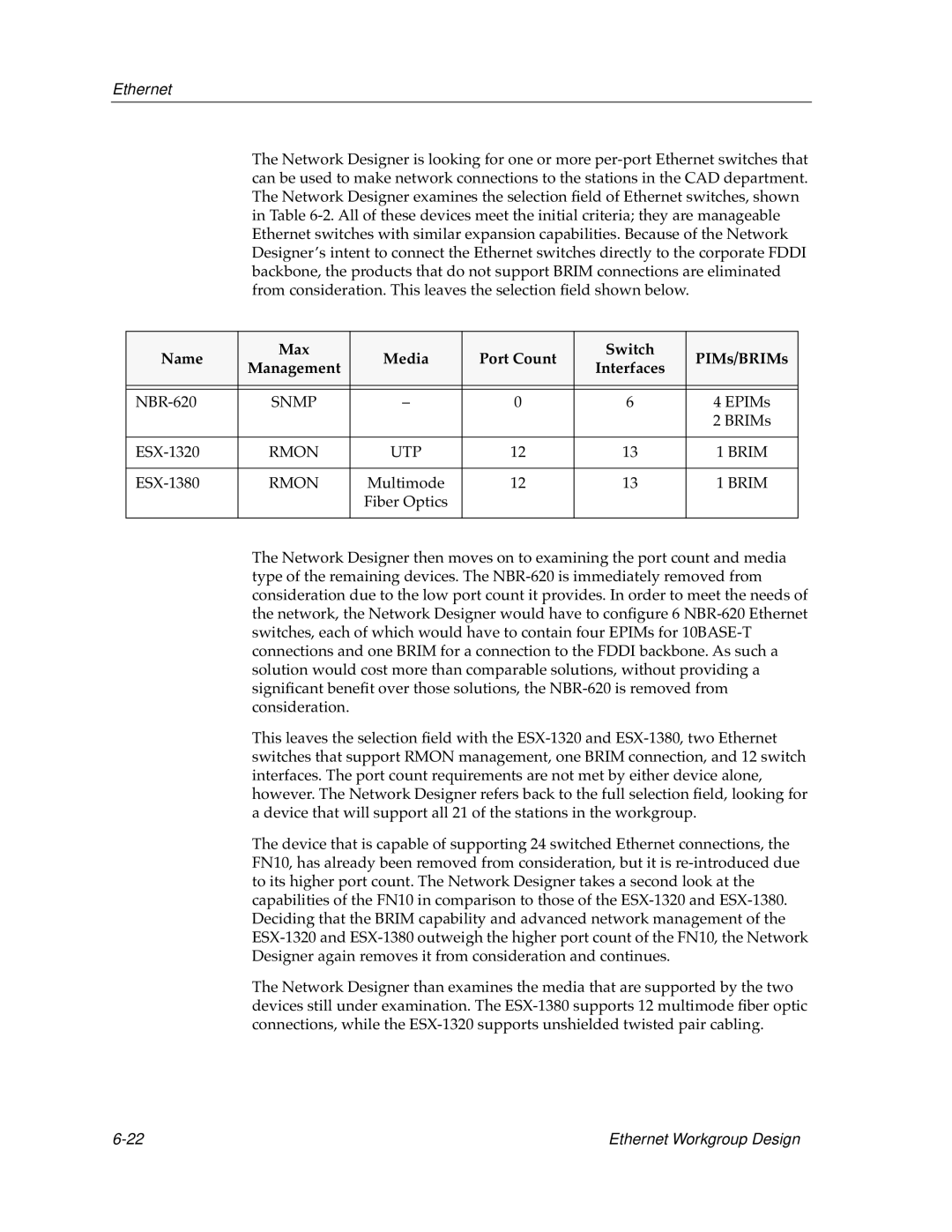The Network Designer is looking for one or more per-port Ethernet switches that can be used to make network connections to the stations in the CAD department. The Network Designer examines the selection field of Ethernet switches, shown in Table 6-2. All of these devices meet the initial criteria; they are manageable Ethernet switches with similar expansion capabilities. Because of the Network Designer’s intent to connect the Ethernet switches directly to the corporate FDDI backbone, the products that do not support BRIM connections are eliminated from consideration. This leaves the selection field shown below.
| Name | Max | Media | Port Count | Switch | PIMs/BRIMs |
| Management | Interfaces |
| | | | |
| | | | | | |
| | | | | | |
| NBR-620 | SNMP | – | 0 | 6 | 4 EPIMs |
| | | | | | 2 BRIMs |
| | | | | | |
| ESX-1320 | RMON | UTP | 12 | 13 | 1 BRIM |
| | | | | | |
| ESX-1380 | RMON | Multimode | 12 | 13 | 1 BRIM |
| | | Fiber Optics | | | |
| | | | | | |
The Network Designer then moves on to examining the port count and media type of the remaining devices. The NBR-620 is immediately removed from consideration due to the low port count it provides. In order to meet the needs of the network, the Network Designer would have to configure 6 NBR-620 Ethernet switches, each of which would have to contain four EPIMs for 10BASE-T connections and one BRIM for a connection to the FDDI backbone. As such a solution would cost more than comparable solutions, without providing a significant benefit over those solutions, the NBR-620 is removed from consideration.
This leaves the selection field with the ESX-1320 and ESX-1380, two Ethernet switches that support RMON management, one BRIM connection, and 12 switch interfaces. The port count requirements are not met by either device alone, however. The Network Designer refers back to the full selection field, looking for a device that will support all 21 of the stations in the workgroup.
The device that is capable of supporting 24 switched Ethernet connections, the FN10, has already been removed from consideration, but it is re-introduced due to its higher port count. The Network Designer takes a second look at the capabilities of the FN10 in comparison to those of the ESX-1320 and ESX-1380. Deciding that the BRIM capability and advanced network management of the ESX-1320 and ESX-1380 outweigh the higher port count of the FN10, the Network Designer again removes it from consideration and continues.
The Network Designer than examines the media that are supported by the two devices still under examination. The ESX-1380 supports 12 multimode fiber optic connections, while the ESX-1320 supports unshielded twisted pair cabling.
